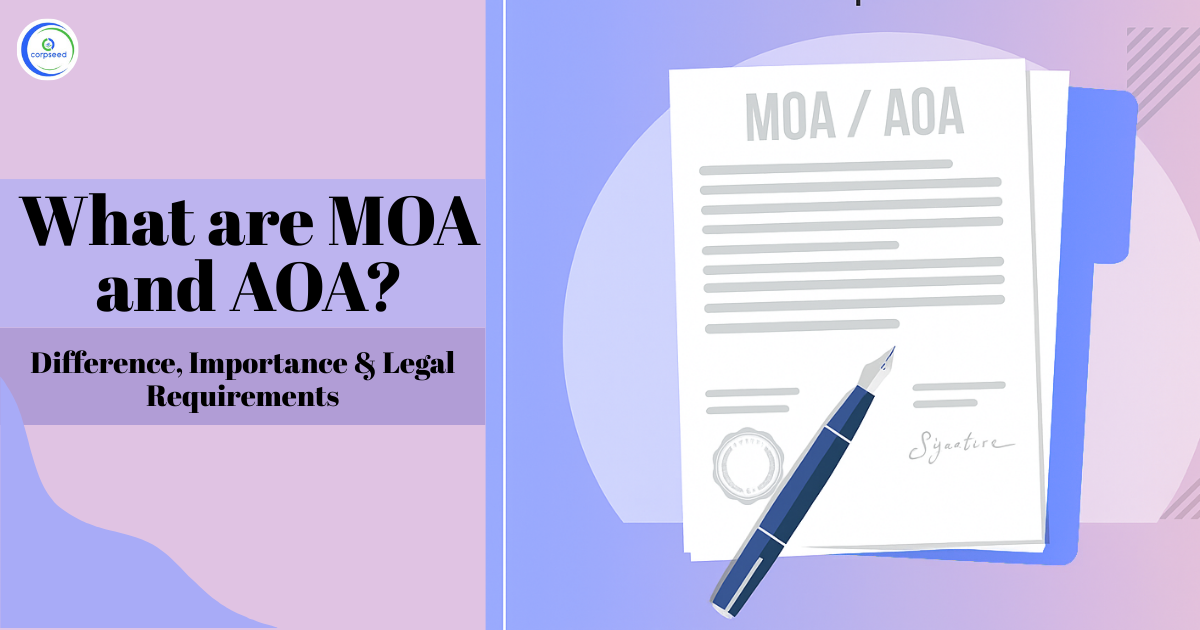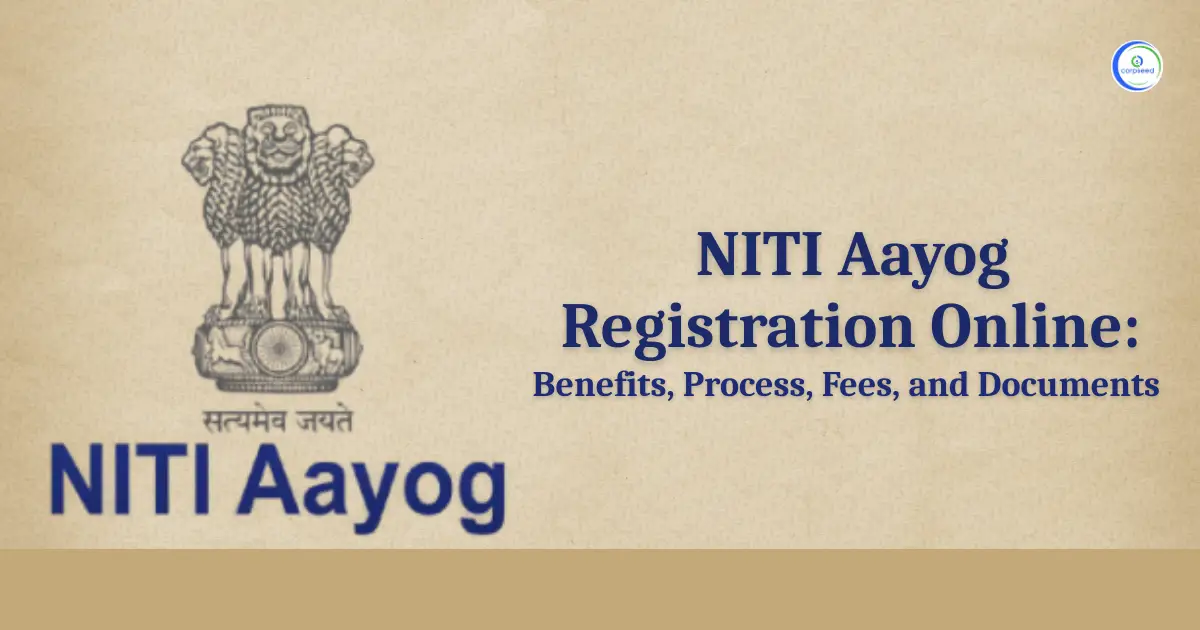Every registered company in India needs a strong legal base. Two important documents create this base: the Memorandum of Association (MOA) and the Articles of Association (AOA). These documents give power, structure, and rules to a company. A company cannot work or get registration without an MOA and an AOA.
The MOA shows the purpose of the company. AOA shows the internal rules of the company. Both documents support smooth working, protect members, and ensure legal operations under the Companies Act, 2013. A clear understanding of MOA and AOA helps people know how a company runs in the right and legal way.
Table of Contents
--------------Blog Contact Form-------------
What is MOA? (Memorandum of Association)
The Memorandum of Association is the main charter of the company. It tells why the company was formed and what activities are allowed. It sets limits for all business operations. Any activity outside these limits is unlawful and not allowed. Main Clauses of MOA
- Name Clause: Official company name registered with the ROC.
- Registered Office Clause: State where the company office is located.
- Object Clause: Main work and other business activities of the company.
- Liability Clause: Member liability in case of debt or loss.
- Capital Clause: The Company's share capital and share division.
- Subscription Clause: First members who agree to form the company.
MOA shows the connection between the company and the outside world. It builds trust and transparency for investors, customers, and the public.
What is AOA? (Articles of Association)
The Articles of Association work as the internal rulebook of the company. It explains how the company will handle day-to-day tasks and how decisions will be made. Important Points Covered in AOA
- Appointment and duties of directors
- Rules for meetings and voting
- Share issue, transfer, and rights
- Dividend distribution
- Financial and record-keeping rules
AOA protects the structure and discipline of internal operations. It guides the company to run smoothly with proper processes.
Difference between MOA and AOA
The difference between MOA and AOA is:
| Features | MOA | AOA |
| Purpose | Shows the company’s goals and powers | Shows internal rules and working |
| Nature | Main charter | Internal constitution |
| Controls | Relationship with outsiders | Relationship with members |
| Flexibility | Very hard to change | Easier to change |
| Legal Value | Mandatory document | Mandatory document |
| Governs | Company’s scope and limits | Daily administration |
| Format | Schedule I: Table A to E | Schedule I: Table F to J |
Why MOA and AOA Are Important?
Both documents carry high importance for company safety and growth. Here is the importance of MOA & AOA:
- Legal Identity: A company gets legal status only after submitting the MOA and AOA.
- Makes Rules Clear: Everyone in the company knows what to do and how to do it.
- Stops Illegal Activities: The company cannot do work that is not written in the MOA.
- Protects Members and Money: The rules help keep the company's money and people safe.
- Helps in Fair Decisions: Directors and members follow the same rules, so choices stay fair.
- Builds Good Image: Clear rules make the company look honest and responsible.
- Protection from Unauthorized Acts: If any work goes beyond the MOA, the action becomes invalid (ultra vires).
Legal Requirements of MOA & AOA
Both MOA and AOA must follow the rules under the Companies Act, 2013. These rules help to keep the company legal and compliant.
Legal Requirements for MOA Compliance
1. Compliance with Companies Act, 2013
- Must follow Schedule I (Table A to Table E).
- Must include all six clauses under Section 4.
2. Verification of Company Name
- Name must be unique and match Rule 8 of the Companies (Incorporation) Rules, 2014.
- Name approval required through the RUN form on the MCA Portal.
3. Object Clause Clear Definition
- Business objects must be clear and specific to avoid ultra vires actions.
- Any change needs a special resolution under Section 13.
4. Registered Office Compliance
- A company must tell the government where its main office is under Section 12.
- Proof documents must be filed within 30 days of incorporation.
5. Share Capital & Subscription Clause
- Authorized capital must match Section 61 rules.
- Initial subscribers must sign the MOA with a witness during incorporation.
Legal Requirements for AOA Compliance
1. Proper Structure & Format
- Must follow Schedule I (Table F to Table J).
- Must be signed by subscribers in front of a witness.
2. Rules for Directors
- Appointment and role must align with Section 149.
- Quorum rules must follow Section 174.
- Duties of directors must follow Section 166.
3. Shareholder Rights & Share Capital Management
- Share issue and buy-back must follow Section 68.
- The share transfer process must follow Section 56 rules.
4. Meetings and Voting
- AGM must follow Section 96.
- Voting rights must follow Section 47.
5. Dividend Rules
- Dividend declaration must follow Section 123.
- The profit distribution method must be mentioned clearly.
6. Company Winding-Up Rules
- Must include rules as per Sections 270 to 365.
- Shareholder rights must stay protected during closure.
Conclusion
MOA and AOA are essential legal documents for every company in India. MOA explains the purpose and power, while AOA explains the rules and working system. They protect the company, members, and the public from confusion and unlawful actions.
A correct and complete MOA and AOA help a company start smoothly, work properly, and grow with trust and legal security. These documents stay with the company for life and always guide the business in the right direction.
This portion of the site is for informational purposes only. The content is not legal advice. The statements and opinions are the expression of author, not corpseed, and have not been evaluated by corpseed for accuracy, completeness, or changes in the law.
BOOK A FREE CONSULTATION
Get help from an experienced legal adviser. Schedule your consultation at a time that works for you and it's absolutely FREE.







.png)

